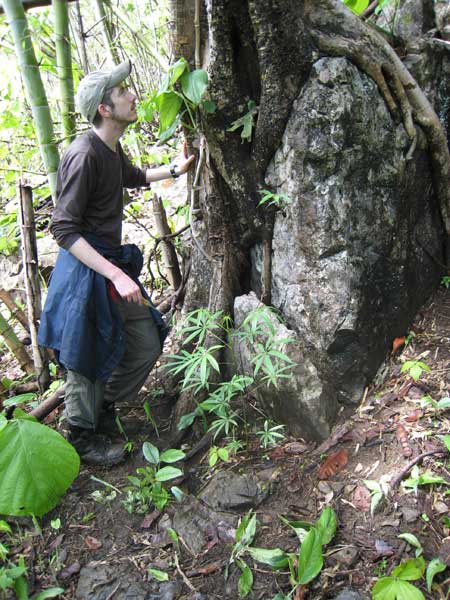The Natural World: On the trail of the Vietnamese snail

Your support helps us to tell the story
This election is still a dead heat, according to most polls. In a fight with such wafer-thin margins, we need reporters on the ground talking to the people Trump and Harris are courting. Your support allows us to keep sending journalists to the story.
The Independent is trusted by 27 million Americans from across the entire political spectrum every month. Unlike many other quality news outlets, we choose not to lock you out of our reporting and analysis with paywalls. But quality journalism must still be paid for.
Help us keep bring these critical stories to light. Your support makes all the difference.
I'm scrabbling through the soil, picking through the vegetation and scouring beneath the rocks for snails. As curator of molluscs this isn't unusual, but this time I'm in the middle of a tropical rainforest in northern Vietnam, 120km south-west of Hanoi. It is over 30C, humid, and I'm pretty sure I've just been bitten by another blood-sucking leech – but I think I have the best job in the world.
We are searching in Cuc Phuong National Park for terrestrial molluscs, slugs and snails. The aim of the trip is to collaborate with local research partners and help to develop land snail expertise in South and South-east Asia, but also to establish or enhance reference collections to help local scientists to study the molluscan fauna.
We have come to this site as it is located on two limestone mountain ranges. Calcium from limestone is important for shell development, hence the wonderfully rich diversity and abundance of molluscs. The rocks in front of me are covered in a flat, almost limpet-like land snail that has caused a stir. No one is quite sure yet what group of snails this animal belongs to but it is definitely an exciting find and we are looking forward to investigating it further back at the Natural History Museum.
I spend almost an hour picking micro molluscs off the limestone rock face with a pin before I look up and realise that the view is breathtaking. This is my first time in a tropical rainforest and the thing that strikes me is the depth and variety of green. In one direction lies a small coastal town next to a the ocean and in the other a huge patchwork of green agricultural land and forests of all ages and hues. It's easy to get sucked into your work on trips like this, and it's amazing to sit back and absorb the beautiful and fragile habitat.
Earlier in the day we were stopped by a group of young women who seemed interested in our work. It was very flattering to have a group of ladies watching my every move until my Vietnamese colleagues translated that they were bewildered by my pale and untanned skin rather than my macho jungle man actions, and had christened me "limestone man".
Vietnam may be full of blood-sucking creatures and women who gawp at me for my pale skin, but it has beautifully rich and diverse habitats full of important and interesting plants and animals, and I'll take on a leech any day to come back here again.
Find out about the work of museum scientists at the Natural History Museum's summer exhibition The Deep Sea. Open until 5 September, visitors will discover the extraordinary yet fragile biodiversity that exists in the deep oceans. Find out more at www.nhm.ac.uk
Join our commenting forum
Join thought-provoking conversations, follow other Independent readers and see their replies
Comments